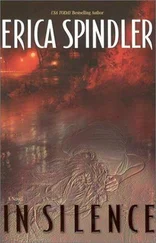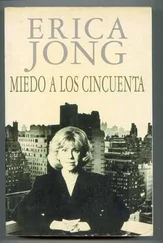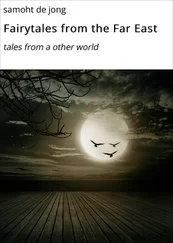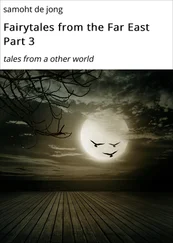For his own amusement, Hummel also printed a weekly pamphlet called Heidelberg Alt und Neu. It consisted mostly of advertising for restaurants and hotels, train schedules, movie programs, and the like. But occasionally Hummel (who had once been a war correspondent at the battle of Anzio) wrote an editorial on some community issue, and from time to time he interviewed some town personality or visitor for fun.
After a year of hunting Nazis in Heidelberg (and taking a strange series of odd jobs, all of which only increased my depression) I ran into Hummel who asked me to be his “American editor” and help him get more English-speaking readers for Heidelberg Alt und Neu. The idea was to lure them with a column on some tourist attraction and then sell them his advertisers’ products: Rosenthal china, Hummel (no relation to him) figurines, household gadgets, local wines and beers. I was to write a weekly column paid at the rate of 25 Deutsche Marks (or $7) and Hummel would provide photographs and translate the text into German on a facing page. I could write about anything that interested me. Anything at all. Of course I took the job.
At first I wrote about “safe” subjects-ruined castles, wine festivals, historic restaurants, odds and ends of Heidelberg history and apocrypha. I used the column to teach myself about things. I used it as a means of snooping into places I wouldn’t otherwise have seen. At times I wrote satirically, spoofing events like German-American Friendship Week or the Fasching Ball in the town hall. At times I wrote reviews of art shows and operas, discussions of architecture and music, accounts of historic visitors to Heidelberg like Goethe and Mark Twain. I learned all kinds of interesting things about the city, picked up quite a lot of conversational German, became a minor celebrity in town and on the army post, and got lavishly wined and dined by Heidelberg restaurants which wanted to be written up. But there was a glaring disparity between my brittle, witty columns on the pleasures of Heidelberg and the way I really felt about Germany. Gradually I got braver and was able to bring my feelings and my writing into some sort of uneasy alignment. What I learned from those columns foreshadowed what I was later to learn in my “real writing.” I started out being clever and superficial and dishonest. Gradually I got braver. Gradually I stopped trying to disguise myself. One by one, I peeled off the masks: the ironic mask, the wise-guy mask, the mask of pseudosophistication, the mask of indifference.
In my snooping around town for ghosts, I had discovered the solidest ghost of all-a Nazi amphitheater nestled in the hills above Heidelberg. Going there became an obsession with me. Nobody in Heidelberg seemed to recognize the existence of the place and this denial gave the amphitheater an added appeal. Perhaps it didn’t even exist except in my own mind. I went back again and again.
It was built in 1934 or ’35 by the Youth Labor Corps (I could just imagine them: blond, shirtless, singing Deutschland über Alles, lifting the pink sandstone rocks of the Neckar Valley while blowsy Rhine maidens brought steins of piss-dark beer), and it was nestled in the crotch of the Heiligenberg, or Holy Mountain, where a shrine to Odin had reputedly once stood. I would reach the amphitheater by driving across the river from the old town, down a wide street which led to the suburbs, then up the Holy Mountain, following the signs to the ruins of St. Michael’s Basilica. The amphitheater itself was not, sinisterly enough, marked. The road wound upward through the woods, the light filtered down between the black-green pines, and I was Gretel in a huffing, puffing Volkswagen, but no one was dropping bread crumbs behind me.
As I wound my way up the hill, thinking of all those cruel German fairy tales featuring frightened little girls and dark woods, the car would stall in third gear. Afraid of rolling backward down the Ml, I’d shift into second and stall again. Finally, I would have to climb in first gear.
At the top of the Heiligenberg was a smallish tower built of red sandstone, with mossy, worn-down steps winding to a lookout on top. I’d climb the slippery steps for a view of the city-and there it would be: the gleaming river, the dappled woods, the pinkish hulk of the castle. Why did chroniclers of the Third Reich say everything about Germany except that it was beautiful? Was that too morally ambiguous? The beauty of the countryside and the ugliness of the people. Couldn’t we cope with such irony?
Descending from the tower, I’d walk deeper into the woods past a small restaurant called Waldschenke (or, forest tavern) which featured fat-bottomed burghers drinking beer outside in summer, mulled wine inside in winter. There I had to leave the car and continue up through the forest (leaves crunching underfoot, pines drooping overhead, sun obliterated by foliage). Since the tiers of seats were cot into the hillside, the entrance to the amphitheater was from above. Suddenly the theater gaped beneath you-row after row of weedy seats, littered with bottle glass, condoms, candy wrappers. At the base was an apron stage flanked by flagpoles for the swastika or the German Eagle. And on either side were entrances for speakers to appear surrounded by brown-shirted bodyguards.
But the most astonishing part was the setting: a gigantic pine-rimmed bowl nestled in the unearthly quiet of those fairy-tale woods. The ground was sacred. Odin had been worshipped, then Christ, then Hitler. I would dash down the hill over the tiers of seats and stand in the dead center of the stage reciting my own poetry to an audience of echoes.
One day I told Horst that I wanted to write about the amphitheater.
“Why?” he asked.
“Because everyone pretends it isn’t there.”
“Do you think that’s enough of a reason?”
“Yes.”
I went to the Heidelberg main library and began looking through guidebooks. Most of them were routine, with glossy photos of the Schloss and old engravings of the pasty-faced Electors of the Palatinate. Finally I came across a library-bound one, English and German on facing pages, with cheap, yellowing paper, black and white photographs and old Gothic type. The publication date was 1937, and every ten pages or so a paragraph or a photo or a small block of type was covered over with a square of oak-tag. These little squares were firmly glued down so that you couldn’t lift the corners, but the minute I saw them I knew I wouldn’t rest until I had unglued them all and discovered what was underneath.
I checked out the book (along with four others so the librarian wouldn’t be suspicious) and raced home where I carefully steamed the offending pages over a tea-kettle spout.
It was interesting to see what the censor had thought to censor:
A photograph of the amphitheater in all its glory: flags rippling in the wind, hands flying upward in a Nazi salute, hundreds of little pinpoints of light-representing Aryan heads-or perhaps, Aryan brains.
A passage describing the amphitheater as “One of the monumental buildings of the Third Reich, a Giantic [sic] Openairtheatre which aims at uniting thousands of Fellow-Germans for Festive and Solemn-Hours in a common Experience of Loyalty to the Fatherland and Inspirations of the Nature.”
A paragraph describing the (now rutted and bumpy) Heidelberg-Frankfurt Autobahn as the “Giantic [sic] and Monumental Creation of the New Age which is so much Promising.”
A paragraph describing Germany as “This Nation favored to the Gods and placed in the First Ranks of the Great and Powerful Nations…”
A photograph of the main assembly hall of the university with swastikas hanging from every Gothic arch…
A photograph of the mensa with swastikas hanging from every Roman arch…
And so on and so on throughout the book.
Читать дальше

![Brian Jacques - [Flying Dutchman 01] - Castaways of the Flying Dutchman](/books/128851/brian-jacques-flying-dutchman-01-thumb.webp)










